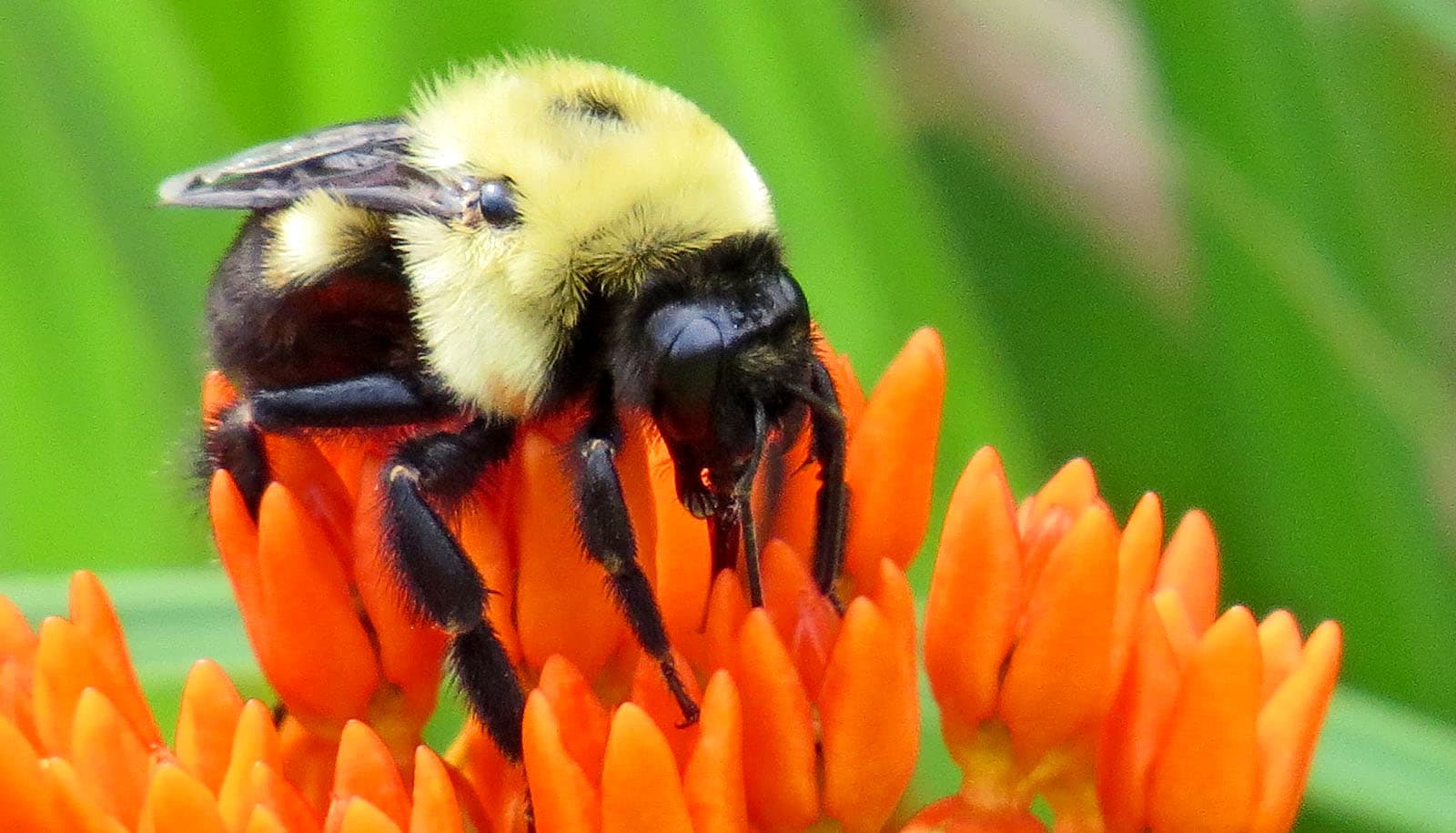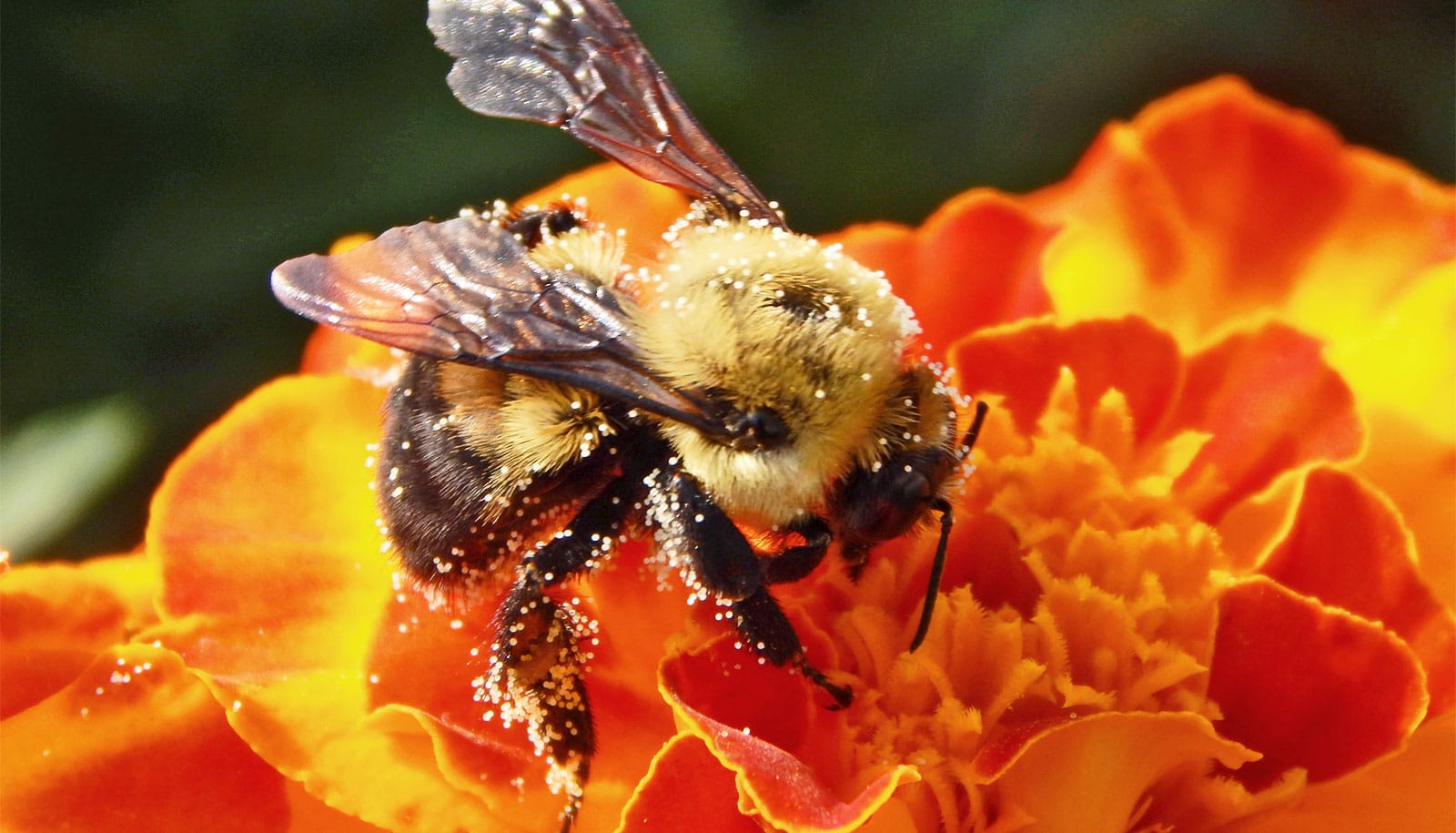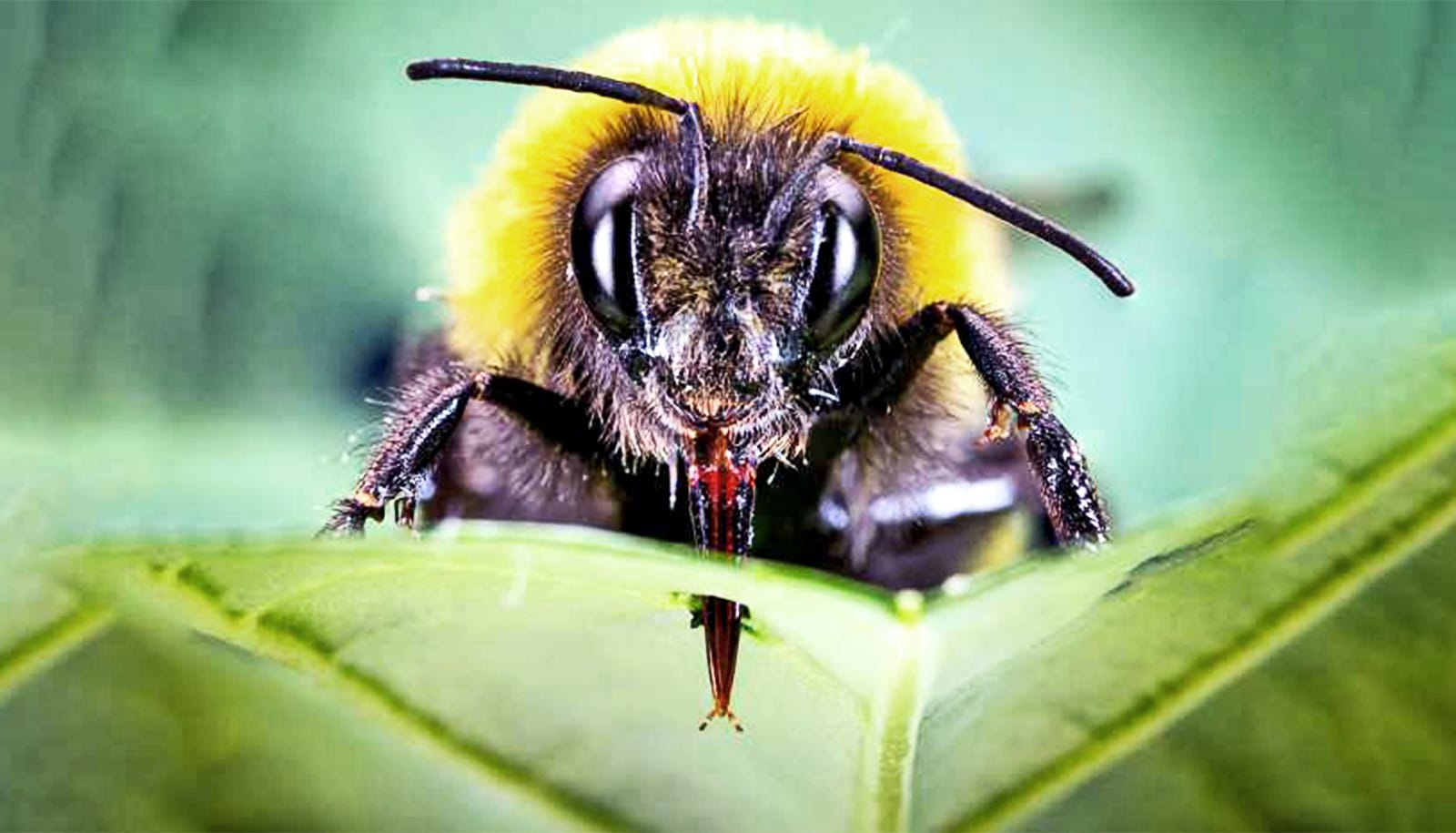The shape of flowers has the biggest effect on how bumblebees acquire parasites, a study shows.
The findings could help people plant flowers that are less likely to spread parasites in pollinator habitats.
The researchers examined the common eastern bumble bee (Bombus impatiens) and a gut parasite called Crithidia bombi to study how floral traits—like the size and shape of flowers or number of flowers—played roles in three steps that lead to parasite transmission to bees on flowers: fecal deposition on flowers, parasite survival on flowers, and acquisition of the parasite by a new bee host. Parasite spread has been implicated as a major driver of bee population decline.
“Of the flower traits we measured, floral shape was the best predictor of parasite transmission to bees,” says Mario Simon Pinilla-Gallego, a former PhD student in the department of applied ecology at North Carolina State University and co-corresponding author of a paper describing the research in the journal Ecology.
“Wide and short flowers—like black-eyed Susans and coneflowers—reduce the survival of the parasite on flowers, but at the same time they collect more bee feces, and bees are more likely to come in contact with and acquire the parasite on these types of flowers,” says Rebecca Irwin, professor of applied ecology and co-corresponding author of the paper.
The researchers say that identifying floral traits and flower species that have lower rates of parasite transmission to bees could provide a win-win for pollinators. Flower mixes could both promote bee health and provide floral resources for bees.
The researchers add that other factors—how often and how long bees visit flowers, the behavior of bees while foraging, and environmental factors that could change the effects of particular floral traits—provide future directions for studying bee health.
Coauthors of the paper are from NC State and Cornell University.
Support for the work came from the National Institute of General Medical Sciences of the National Institutes of Health, the USDA-NIFA Research and Extension Experiential Learning for Undergraduates (REEU) fellowships program, and the Southeast Climate Adaptation Science Center.
Source: NC State


